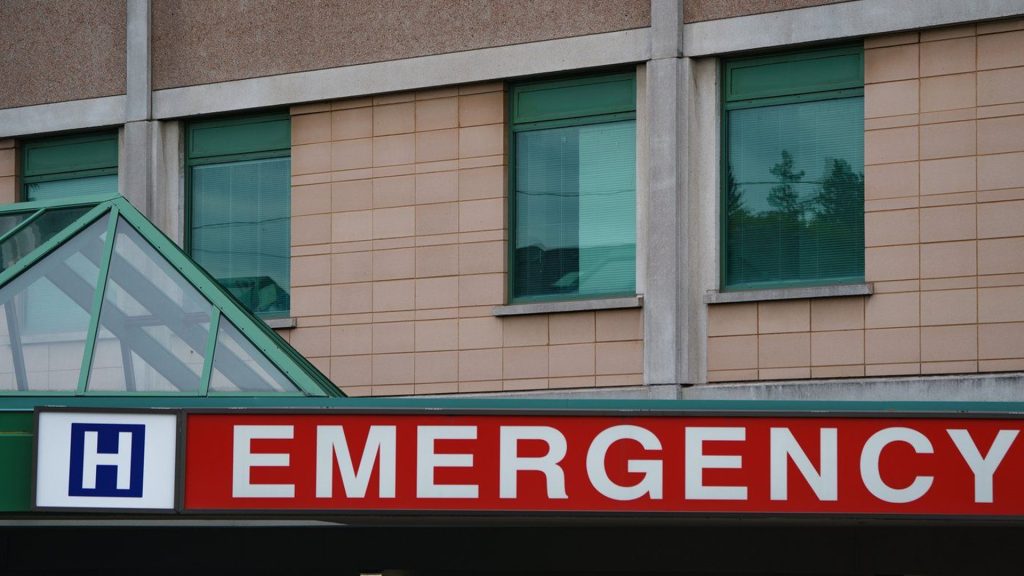More than two-thirds of Ontario paramedics experience abuse on job: study
Posted December 29, 2011 3:39 pm.
This article is more than 5 years old.
Paramedics coping with the demands of providing front-line emergency care are also facing personal attacks on the job, with more than two-thirds polled in Ontario and Nova Scotia reporting incidents of verbal, physical or sexual abuse, according to new research.
Lead investigator Blair Bigham, an associate scientist at Rescu, which is based at St. Michael’s Hospital in Toronto, has been a paramedic for 5 1/2 years, working on ground ambulances and helicopters.
Bigham said he and his colleagues had been aware that fellow paramedics had experienced violent acts, but were unaware of how commonly those incidents occurred.
It’s a reality Bigham, too, has faced firsthand. He said he has experienced both verbal abuse and intimidation from people in crisis. After the study had begun, Bigham said he experienced his first physical assault while working as a paramedic.
“It wasn’t a major incident, but it just further punctuated that this can happen to anybody, anywhere,” he said in an interview Thursday.
Emergency Medical Service workers in Ontario and Nova Scotia were invited to take part in the study while attending a continuing education seminar this year. Bigham said they didn’t have the resources to poll nationally.
Researchers received a 90 per cent response rate with more than 1,300 paramedics taking part. Respondents were asked if they had directly been the victims of various forms of violence within the previous 12 months.
According to the findings published in the January issue of Prehospital Emergency Care, verbal abuse was the most commonly reported among 67.4 per cent of EMS workers surveyed, while intimidation was reported by 41.5 per cent of respondents.
Some 26.1 per cent polled reported being physically abused, 13.6 per cent reported sexual harassment, and 2.7 per cent reported sexual assault.
Of the 1,381 paramedics polled, 70 per cent were male with a median age of 34 and 10 years experience in EMS.
Bigham, an advanced care flight paramedic for York Region EMS and Ornge, Ontario’s transport medicine service, said he wasn’t surprised that paramedics suffered violence. However, he was taken aback at how many EMS workers reported on-the-job abuse.
“Almost 70 per cent said that they had experienced some sort of violence just in the last 12 months,” he said.
“Over the course of a career, paramedics are probably exposed to this numerous times, and so that can take a toll on paramedics’ mental health, and maybe their life outside of work.”
In reported acts of verbal abuse, the majority of incidents were perpetrated by either patients (62.9 per cent) or family members or friends of patients (36.4 per cent), compared to colleagues (20.8 per cent) and bystanders (5.8 per cent).
With respect to acts of physical abuse, 92.3 per cent were committed by patients, patient family members or friends (11.1 per cent), colleagues (3.8 per cent) and 2.3 per cent by bystanders. Bigham wasn’t particularly shocked that many of the acts reportedly committed were done by patients or their loved ones, given the typically high-stress nature and environment surrounding emergency calls.
“Paramedics are called to situations that are very hectic and stressful and the people there are often in crisis and that’s part of what responding to 911 calls entails,” he said. “So the fact that it’s patients or the people around those patients who are feeling stressed and are acting out violently wasn’t really surprising.”
Additional findings include:
— Acts of intimidation were perpetrated by patients (37.8 per cent), patient family or friends (27 per cent), colleagues (45.3 per cent) and bystanders (3.4 per cent).
— Among reported cases of sexual harassment, 64.7 per cent were committed by patients, colleagues (41.2 per cent), patient family or friends (18.4 per cent) and bystanders (8.8 per cent).
— The majority of sexual assault incidents reported were committed by patients (88.9 per cent), colleagues (14.8 per cent), patient family or friends (7.4 per cent) and bystanders (2.7 per cent).
Bigham said the next step is to find out the type of impact these incidents are having on paramedics and to perhaps design strategies to help mitigate post-traumatic stress disorder and other effects on their lives.
Paramedics should also continue reporting such acts to help better track the incidents and provide a greater understanding of situations leading to violence, he added.
“I think just acknowledging that these type of events don’t need to be kept in the dark, that we can shed some light on them and speak about them, can help us better understand what’s going on and help us design interventions that can reduce violence towards paramedics in the field.”










